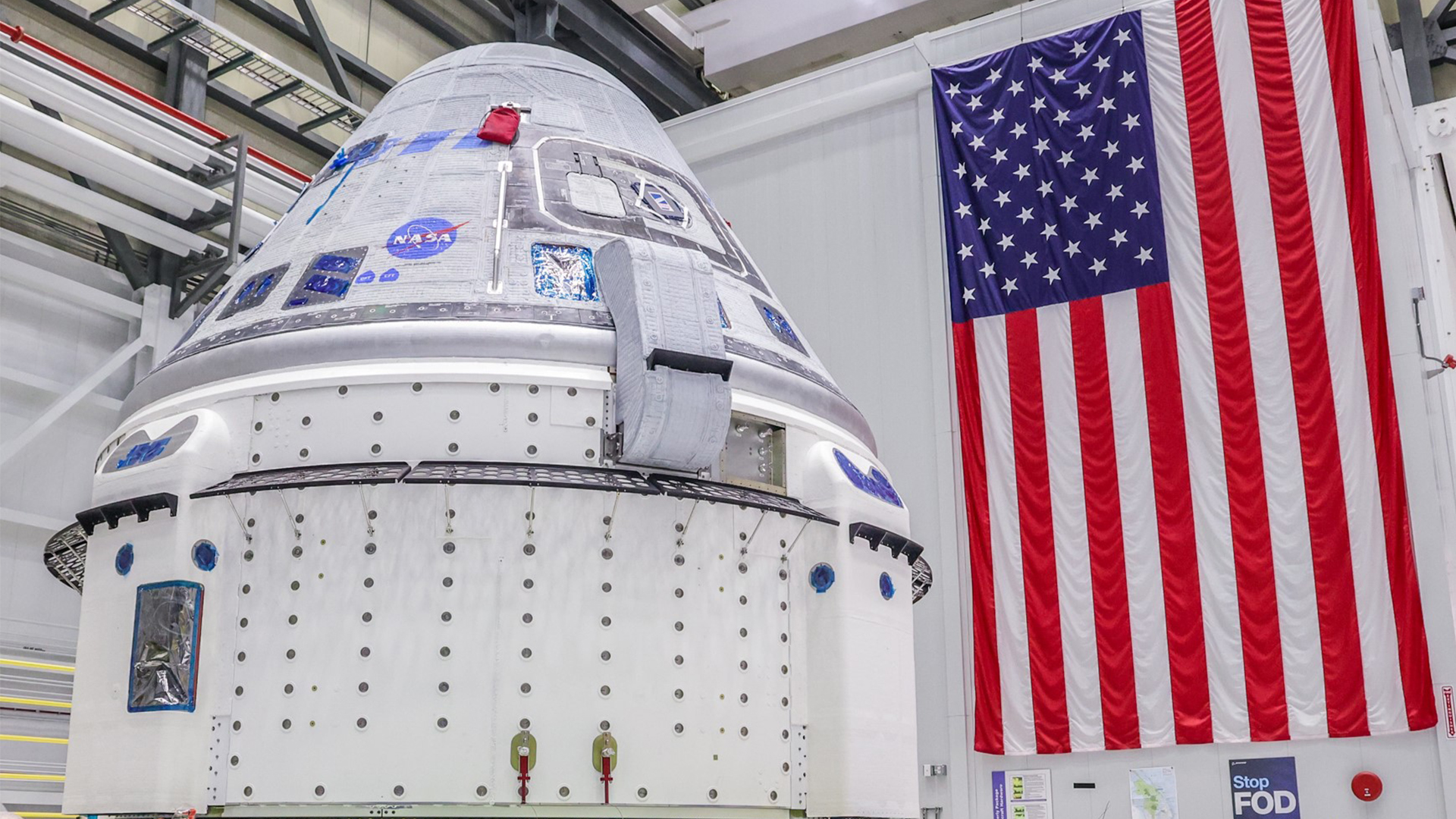NASA, Boeing delay Starliner capsule's 1st astronaut launch to early May

The long-delayed first crewed mission of Boeing's new Starliner capsule has been pushed back again.
That mission to the International Space Station (ISS), called Crew Flight Test (CFT), had been tentatively scheduled to launch in mid-April. But that's no longer the plan, NASA and Boeing announced on Friday (March 8).
CFT is "currently scheduled to launch [in] early May due to space station scheduling," agency officials wrote in an update on Friday afternoon.
Related: Boeing's 1st Starliner flight with astronauts delayed to April 2024
CFT will lift off atop a United Launch Alliance Atlas V rocket from Florida's Cape Canaveral Space Force Station. It will send Starliner, and NASA astronauts Butch Wilmore and Suni Williams, to the ISS for a roughly 10-day stay.
The test flight had been scheduled to launch last July. However, technical issues —chiefly, a problem with the suspension lines on Starliner's main parachutes and the fact that much of the capsule's wiring was wrapped with flammable tape — pushed the liftoff to this spring.
Those problems are under control, NASA said in an update in late January, which stressed that CFT was still on track for a mid-April launch. But ISS traffic issues can alter schedules as well, as Friday's news attests.
Breaking space news, the latest updates on rocket launches, skywatching events and more!
Boeing has been developing Starliner under a multibillion-dollar contract the company signed with NASA in September 2014. The capsule has launched on two uncrewed test flights to date, both of which targeted the ISS.
Starliner suffered several problems on the first mission, which flew in December 2019, and failed to meet up with the orbiting lab as planned. The capsule succeeded on its second try, which lifted off in May 2022.
NASA also awarded SpaceX a commercial crew contract in September 2014. Elon Musk's company has now launched eight operational astronaut missions to the ISS for NASA, the most recent of which, called Crew-8, lifted off on Sunday (March 3).

Michael Wall is a Senior Space Writer with Space.com and joined the team in 2010. He primarily covers exoplanets, spaceflight and military space, but has been known to dabble in the space art beat. His book about the search for alien life, "Out There," was published on Nov. 13, 2018. Before becoming a science writer, Michael worked as a herpetologist and wildlife biologist. He has a Ph.D. in evolutionary biology from the University of Sydney, Australia, a bachelor's degree from the University of Arizona, and a graduate certificate in science writing from the University of California, Santa Cruz. To find out what his latest project is, you can follow Michael on Twitter.
